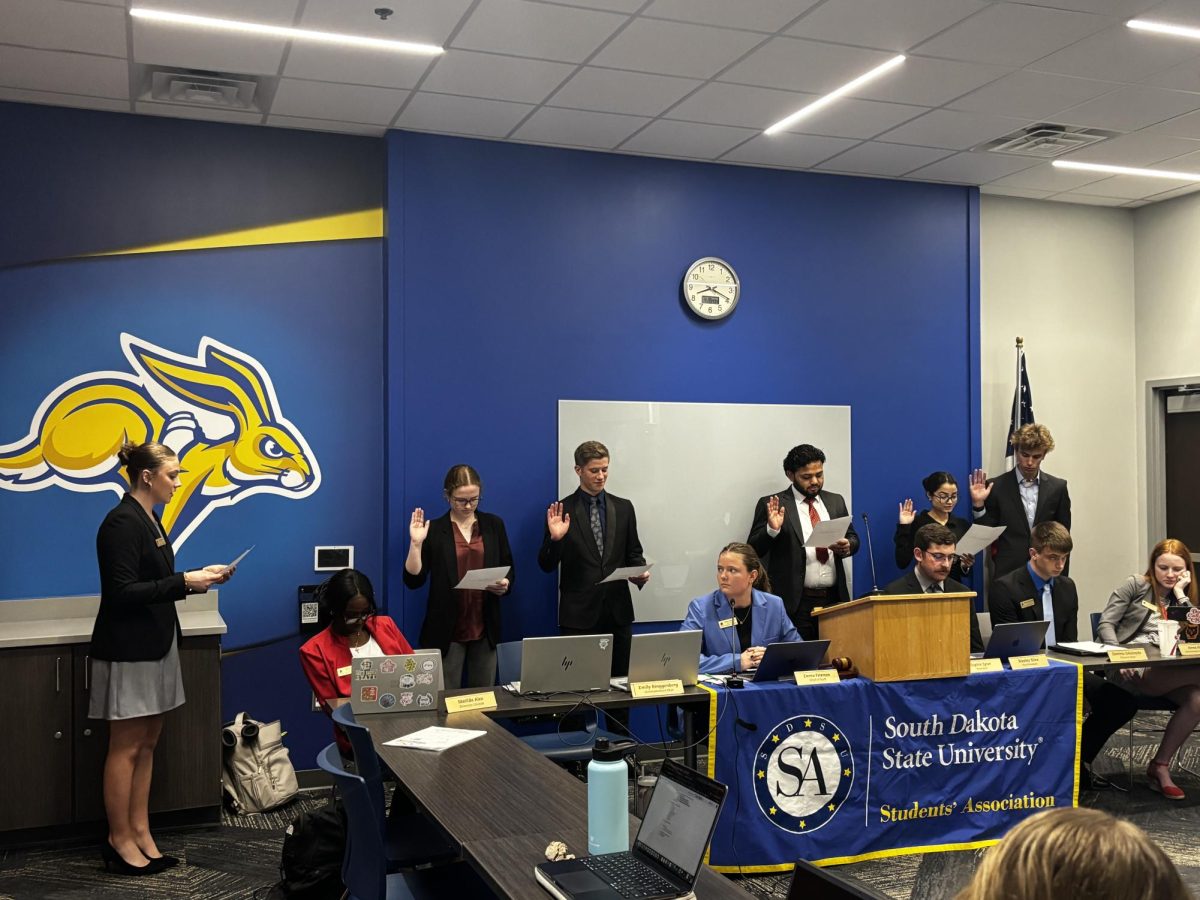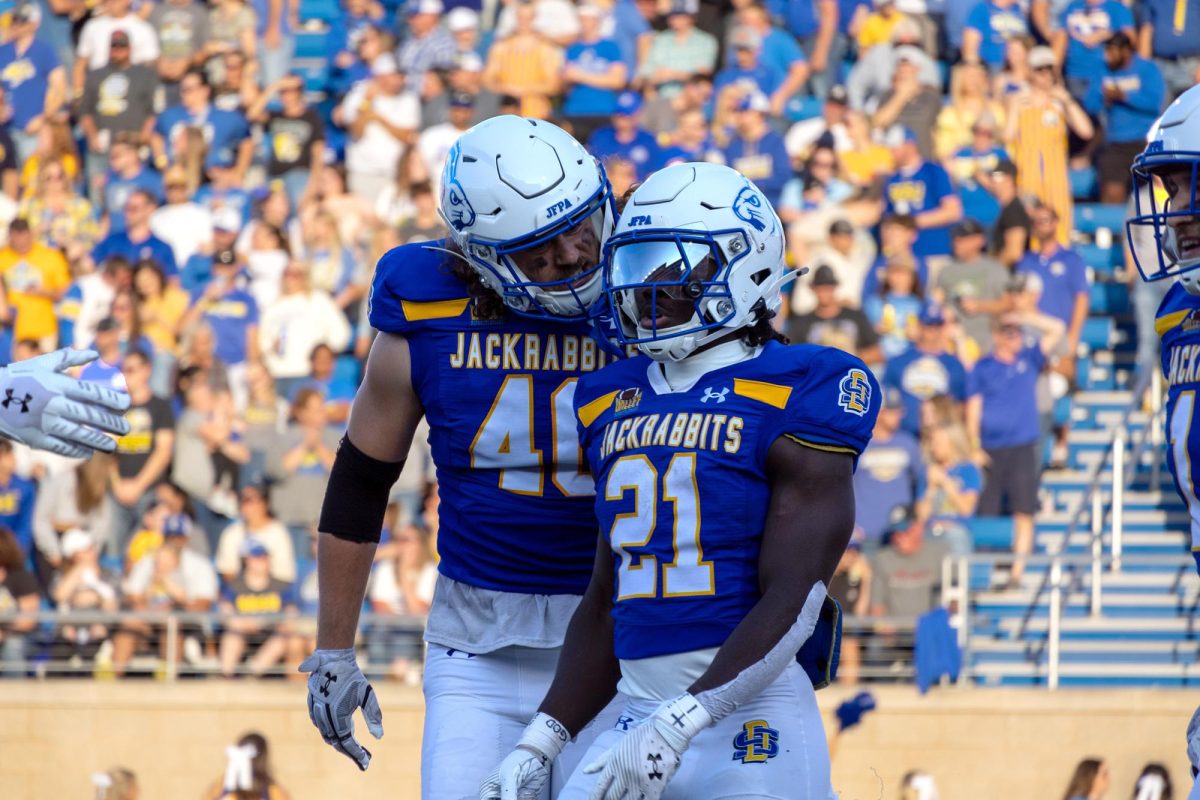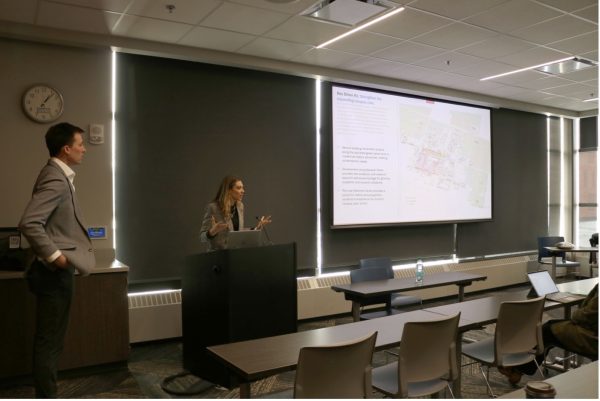Road to SDSU: student over comes cultural boundaries, prejudices on path to college
October 4, 2011
One SDSU student rose above cultural stigma and worked hard to get where she is today.
Nellie Two Elk graduated from high school with 68 people. Twenty of these students went to college and now only four, including Two Elk, continue to take classes.
“I know I’m here for a reason,” she said. “I just have to stay focused and keep going forward.”
Many students in middle and high school have things that drag them down or cause them to meander off the path leading to college. Being a Native American student living next to the Rose Bud Reservation in western South Dakota, Two Elk battled a completely different set of challenges leading up to her arrival at SDSU.
As a young girl, Two Elk said her family consisted of her father and younger brother. Her mother left the trio behind when she was a young girl, leaving her father to raise his children alone.
She said because of her father’s job, they moved around often to places like Washington D.C., Arizona and Baltimore.
“It was always a new adventure,” she said. “It felt good to meet new people all the time and every day was different. Whenever we needed to go, we left. We had no ties.”
It wasn’t until they moved to the reservation that she felt different – like she didn’t quite belong.
“The only time I ever felt prejudice was from my own people,” she said. “My brother and I had really long hair and you’d think that would be the norm, but it isn’t. People called my brother a little girl. It was hard.”
Like many students on and off the reservation, she was also teased as a child for other reasons. She was smart. She loved to read and wanted to do well in school, which caused many of her classmates to call her “white girl”.
“Many people got Cs or lower, but I pushed myself,” she said. “I wanted to stand out and be different and be the best and people made fun of me for this.”
Although these comments stung at times, Two Elk said her father raised her to be compassionate and empathetic to everyone – even those who attacked her. She said no matter what people at school said or did to her, she had her father to fall back on. He chose to raise his children on the outskirts of the reservation to help shelter them from drugs, gangs, sounds of arguing neighbors and barking dogs.
Two Elk said she is grateful for this now, even if she didn’t quite understand as a young girl.
“He never let me go to sleepovers unless he knew the parents and different things like that,” she said. “I was very sheltered, but he just wanted me to stay on the right path. There are lots of things on the reservation like gambling, drinking and whatnot that can sway a person and he wanted more for me.”
Two Elk said it’s not uncommon for families living on reservations to have more than 10 people living in the same small house. A friend from school thought she was rich because she had her own room, dresser and clothes that were not hand-me-downs.
“She had eight sisters and they all shared the same bedroom,” she said. “That’s not uncommon, so to others my family looked rich, even if we weren’t.”
For her high school years, Two Elk transferred to Todd County High School. Although Two Elk said Native American students primarily populated the school, it was pegged as the “white school” because teachers held higher standards for students and assigned homework on a regular basis.
Once stereotyped as the “white girl” at St. Francis, the slur quickly changed when she attended high school and was called “the native” because of her traditional Native American appearance.
“My father wanted me and my brother to hold on to our culture, so he raised us with more traditional views,” she said. “I had really long hair, didn’t wear makeup until I was 16 and didn’t wear shorts above my knee until I was 18. That was very different.”
However, in high school Two Elk said there were more students who were like her and enjoyed doing well in school. Because of this, she started to feel more comfortable and was able to break out of her shell. She joined the volleyball team, sang in the choir, and participated in many clubs and groups. Had she been asked to speak in front of a crowd before high school, she would have shuddered at the thought, but her self-confidence grew as she continued to excel.
Two Elk said when a student on the reservation finishes high school the next path is not automatically college.
“Many people say ‘Who cares about college?’ and it isn’t always the next stepping-stone,” she said. “But I knew I wanted to go.”
When she arrived at SDSU in the fall of 2010, Two Elk said the once outgoing girl she became in high school began to fade. She felt disconnected from her family and her culture and felt guilty for leaving – as she could be helping her family, but was instead at school helping herself.
“One of my biggest fears coming to college was losing myself – losing my identity as a Native American woman,” she said. “I missed having that community, that safe haven with my dad and brother.”
Because she missed her family, Two Elk said she went home every weekend, which meant more miles on her car and more money out of her pocket.
“It was hard because I missed my family a lot,” she said. “I just kept thinking about all the people who had high hopes for me and focused on that, and also for myself to do better.”
Now as a sophomore, she goes home much less because she has found ways to get involved on the SDSU campus. She is now the learning community coordinator in Pierson Hall and also the vice president of the Native American Club. Along with those responsibilities, she is double majoring in political science and communication studies and theater.
Dr. Scott Fleming, director of the American Indian and Cultural Center at SDSU, said Two Elk has done a complete 180 since arriving at SDSU. He said she was once very shy, but was able to break that mold and become a leader.
“When Nellie arrived at SDSU last year she was very reserved, but now she’s giving keynote speeches at different events and it’s only the beginning of her second year, and she’s very humble about it,” said Fleming. “She doesn’t want to be placed on a pedestal for the things she’s accomplished – she’s just impressed a lot of people so far.”
Leaving home after this past summer was difficult for her, but Two Elk said she has a goal she is unwilling to let go very easily.
“I don’t want to be the girl that goes home and never comes back,” she said. “I want my story to be one I tell my kids later with the ending that ‘if I can do it, so can you.’ That’s what I’m working toward.”
Although she isn’t sure where her road will lead her from SDSU, she is ready to take on whatever life throws at her because of the path she has endured thus far.
“A hard lesson for any college student is you have to find your own path and not get discouraged when it gets a little foggy,” she said. “I know I have a purpose, but I’m just taking things as they come and am content with that for now.”





















